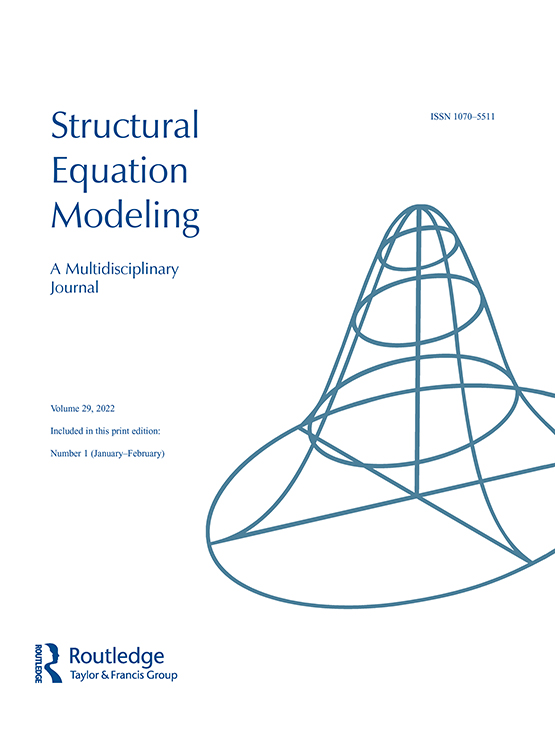具有连续和二分类结果的多水平结构方程建模的贝叶斯方法
IF 3.2
2区 心理学
Q2 MATHEMATICS, INTERDISCIPLINARY APPLICATIONS
Structural Equation Modeling: A Multidisciplinary Journal
Pub Date : 2015-03-03
DOI:10.1080/10705511.2014.937849
引用次数: 116
摘要
多层结构方程模型通常是通过极大似然从频率框架估计出来的。然而,正如本文所示,频率分析的结果并不总是准确的。另外,也可以使用马尔可夫链蒙特卡洛估计方法应用贝叶斯方法。本模拟研究比较了在多水平潜协变量模型背景下使用贝叶斯和频率方法的估计质量。研究了连续变量和二分类变量,因为还不知道不同类型的结果(最明显的是分类)如何影响该建模上下文中的参数恢复。在贝叶斯估计框架内,比较了弥漫性、弱信息性和信息性先验分布的影响。研究结果表明,贝叶斯估计可用于克服收敛问题和改善参数估计偏差。结果强调了二分类和连续变量模型在估计质量上的差异,以及先验分布选择对聚类水平随机效应的重要性。本文章由计算机程序翻译,如有差异,请以英文原文为准。
A Bayesian Approach to Multilevel Structural Equation Modeling With Continuous and Dichotomous Outcomes
Multilevel Structural equation models are most often estimated from a frequentist framework via maximum likelihood. However, as shown in this article, frequentist results are not always accurate. Alternatively, one can apply a Bayesian approach using Markov chain Monte Carlo estimation methods. This simulation study compared estimation quality using Bayesian and frequentist approaches in the context of a multilevel latent covariate model. Continuous and dichotomous variables were examined because it is not yet known how different types of outcomes—most notably categorical—affect parameter recovery in this modeling context. Within the Bayesian estimation framework, the impact of diffuse, weakly informative, and informative prior distributions were compared. Findings indicated that Bayesian estimation may be used to overcome convergence problems and improve parameter estimate bias. Results highlight the differences in estimation quality between dichotomous and continuous variable models and the importance of prior distribution choice for cluster-level random effects.
求助全文
通过发布文献求助,成功后即可免费获取论文全文。
去求助
来源期刊
CiteScore
8.70
自引率
11.70%
发文量
71
审稿时长
>12 weeks
期刊介绍:
Structural Equation Modeling: A Multidisciplinary Journal publishes refereed scholarly work from all academic disciplines interested in structural equation modeling. These disciplines include, but are not limited to, psychology, medicine, sociology, education, political science, economics, management, and business/marketing. Theoretical articles address new developments; applied articles deal with innovative structural equation modeling applications; the Teacher’s Corner provides instructional modules on aspects of structural equation modeling; book and software reviews examine new modeling information and techniques; and advertising alerts readers to new products. Comments on technical or substantive issues addressed in articles or reviews published in the journal are encouraged; comments are reviewed, and authors of the original works are invited to respond.

 求助内容:
求助内容: 应助结果提醒方式:
应助结果提醒方式:


